How To Get A Better Yield From Your Veggie Garden
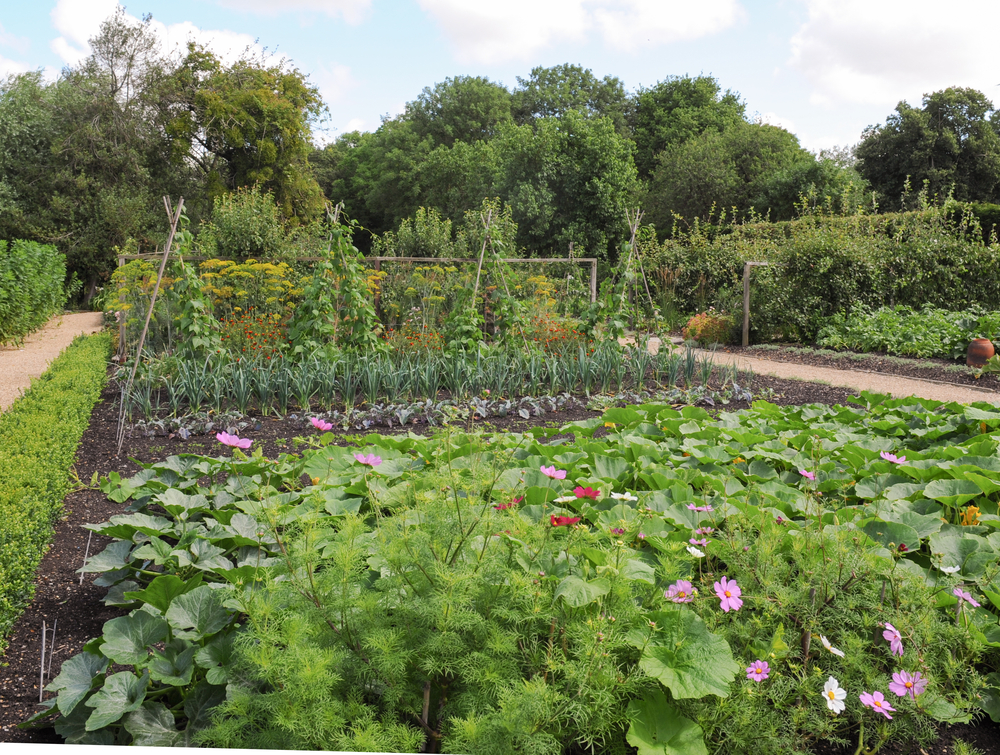
There are plenty of ways to increase yield from your edible garden. Often, the measures you can take are simple. They don't need to cost the earth, either literally or metaphorically.
Increasing the yield you can achieve for a given area, and for a given length of time, can make a big difference. But how exactly should you go about it? What steps can you take to increase the size and quality of your harvest?
As a designer of food producing systems, I understand that maximising yield can be a complex business. On any site, and in any garden, there are a range of complex factors at play. In gardening, as in life, not everything will go according to plan.
There will be times when your hard work simply doesn't pay off, even when you do not do anything wrong. When we are growing our own, we need to learn to roll with the punches. We need to accept that there are certain things which are simply out of our control.
There are, however, a number of things you can do to increase the chances of a higher yield from your edible garden.
Here are 21 recommendations and things to consider when you are trying to improve your growing systems:
1. Choose the Right Growing Methods For Your Needs and Location
When it comes to working out which solutions are best for your particular garden, your needs and your location will be key considerations.
Your Needs
First of all, one of the main questions to ask yourself is how much time you have to devote to your edible garden. A low maintenance forest garden can be ideal and offer optimal yields for those who are short on time. On the other hand, an intensively managed annual vegetable garden may provide higher yields for those who have the time to devote to it.
In order to maximise yield, it is important to be honest with yourself about the reality of your situation. Sometimes, ambition can overreach ability and time.
Yield can sometimes be higher overall if you use slow and small solutions, building up your food production over time. Don't try to do everything all at once, or you could end up with lots of half-finished and poorly maintained areas that don't offer the yields they could do. Take things one step at a time to ensure that you can steadily increase yield over time and don't overstretch yourself.
Your Location
Another important things to think about are the environmental factors and climate in your particular location. The growing methods that work well in one area may deliver only half the yield in another.
For example, it may be important, in cooler climates, to consider under-cover gardening options to extend the growing season. While in warmer climates, providing shade and sufficient moisture for crops in the summer will be a more pressing concern. When choosing a growing method, it is important to take such factors into account.
You might choose:
- Low maintenance perennial planting schemes.
- Intensive annual vegetable gardens (either in the ground or in raised beds or containers).
- Hydroponics or aquaponics gardening methods.
Each of the above can offer high yields, but it is important to refer to your own needs and your location when working out which one might offer the highest yields for you.
2. Select the Right Spot For Your New Edible Garden
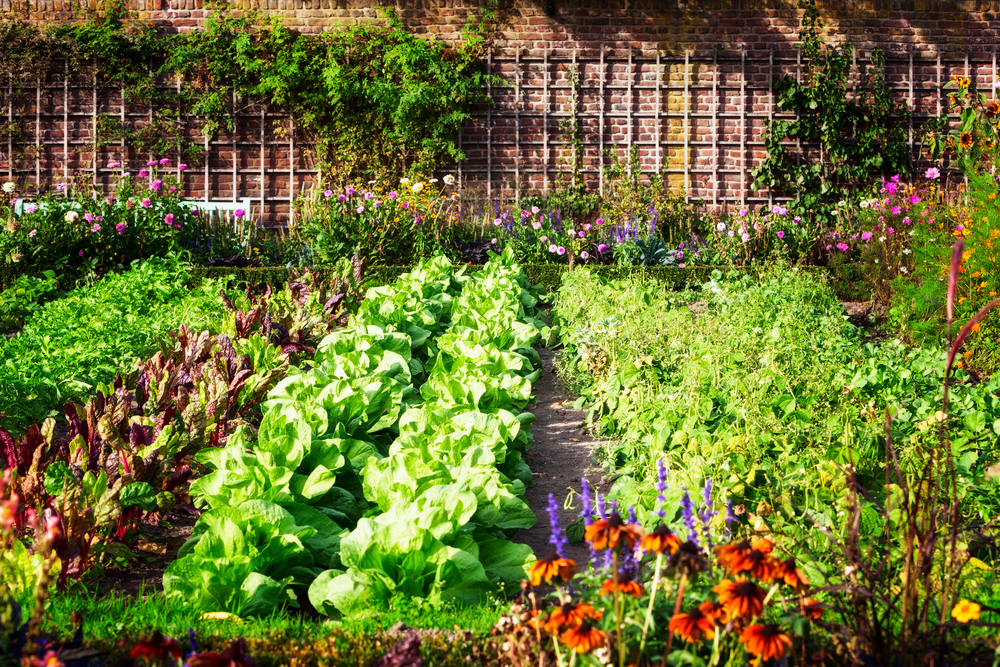
Once you have determined what sort of edible garden will offer the best yields for you, it is also very important to think about where on your land to locate it. You will need to think about:
- Levels of sunlight and shade.
- Whether the site is sheltered or exposed in terms of prevailing winds.
- Soil type and characteristics on the site (if growing in the ground).
- Whether the site will be easy to access from your home. (The closer it is, the more frequently you are likely to visit and tend it. And the more you tend and keep an eye on your garden, the more successful and productive it is likely to be.)
- Where the garden will sit in relation to other elements in your garden (such as water supply, and composting systems, for example). Thinking about how the different elements in your garden interact and how you will move between them can help you come up with an optimal garden design.
Thinking holistically about your garden design will help you optimize yield, and increase it over time. There are plenty of permaculture resources online that will help you with garden design if you want to take a DIY approach and are time rich but cash poor.
However, to truly help you make sure that you can make the most of your space, you could consider employing a permaculture garden designer, who will definitely help you increase the yield from your edible garden by creating a design perfectly suited to your needs and where you live.
3. Protect Your Garden From Wind and Water/ Extreme Weather Events
Garden design to increase yield should not only take the present conditions into account. In order to increase yield long term, you need to take a future-proof approach. Think about making a garden that can adapt more resiliently to climate change and extreme weather events.
There are a number of different things that can be done when it comes to landscaping and planting that can make your garden more resilient and increase the overall yield over the long term. Remember, extreme weather events are becoming more and more frequent. And just one extreme weather event could be all it takes to reduce your yield for a season to nil.
So what can be done to protect and future-proof your garden? Some things you might consider include:
- Managing water more effectively on your property. For example, through planting rain gardens and vegetated swales to contain storm water, you could avoid a flooding event. Collecting and storing water can also help you cope better in the face of drought. Creating a pond or reservoir on your property could also help protect your home and garden from wildfires.
- Terracing slopes, making on-contour swales and undertaking other earthworks. Manipulating the landscape in these ways cannot only help you manage water flow, but can also help to protect the soil and keep your garden productive.
- Planting trees. Planting trees is good in so many ways. Not only can they absorb carbon dioxide and help manage water, they can also be used to create shelter belts, or alongside shrubs in a mixed windbreak or hedge row. Shelter belts, wind breaks and hedges can all also be effective ways to mitigate against certain environmental risks.
4. Use Space Saving Techniques To Grow as Much Food as Possible
Wherever you live (and whichever type of edible garden you choose), increasing yield often involves thinking about how you can make the most of the space you have available.
Layered Planting
In forest gardens and polycultures, layering plants in space can be an effective way to cram in as many food producing plants and other beneficial plants as possible.
Shorter plants and ground cover specimens are grown underneath and around trees or other taller plants. A well designed layered system can often deliver a much higher and more varied yield than a mono-crop plantation or single-variety orchard.
Vertical Gardening
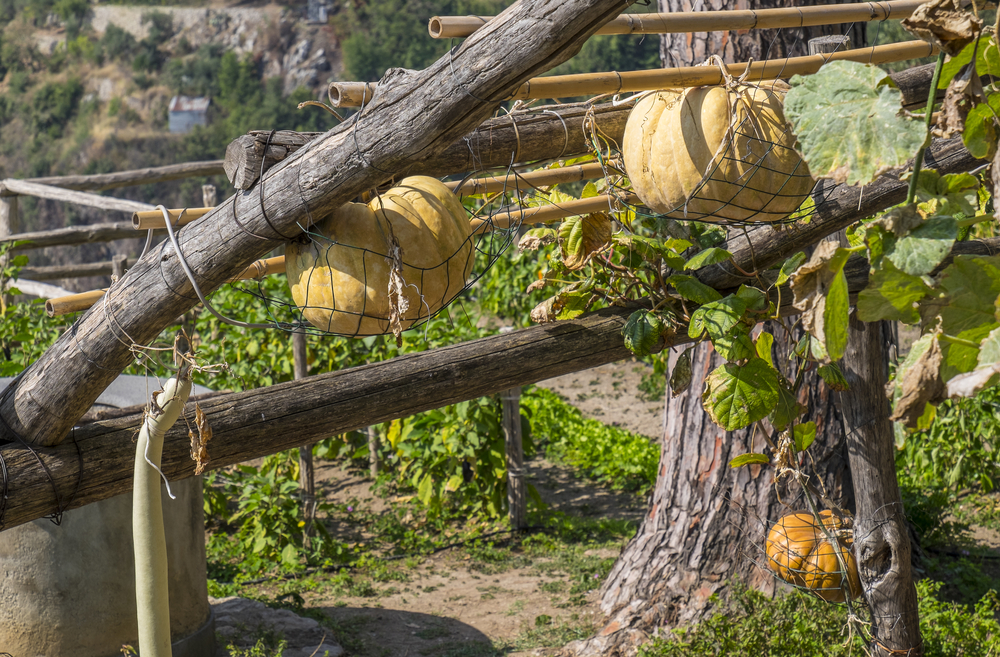
In annual fruit and vegetable production, vertical gardening techniques will allow you to maximise your yield over a given area in your edible garden. Vertical gardening is all about thinking about the vertical space available as well as the horizontal space.
Vertical gardening might be as simple as growing climbing or vining plants up a trellis or other support structure, such as squashes or pumpkins for example.
Another technique is to simply place pots on shelves, or in another vertical structure against a wall or fence. You might also make a range of different vertical gardens, with planting pockets in which additional plants can be grown.
Container Gardening
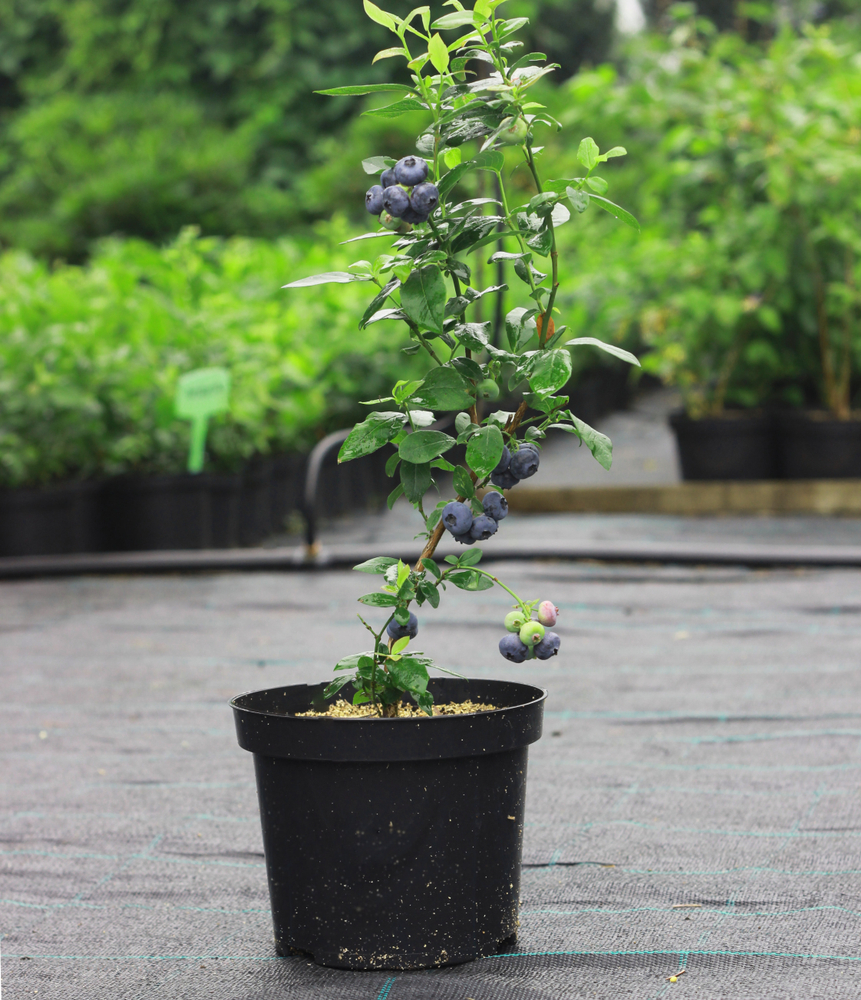
In smaller growing areas, container gardening can also help you grow more food in the space you have available.
Containers can even be placed on pathways and moved around as the year progresses. So even if you have the space for in-ground growing, adding a few containers could help you increase your yield. You might even stack containers to create planting towers.
Hydroponics or Aquaponics
Where land space is limited, hydroponics, and even-better, aquaponics, can be a great way to maximise yield in the space available. In aquaponics, you will not only gain an abundant yield from edible plants, but can also get a yield of fish to add to your diet too.
5. Choose the Right Plants for the Right Places
Wherever you grow, and whichever systems you choose, you should always make sure that you choose the right plants for the right places. Many gardeners are tempted to plan their gardens based on what they enjoy eating.
But while this can be a consideration, your main thoughts should be related to which plants are right for inclusion in your edible garden. And where exactly they should go within that garden scheme.
It doesn't matter how perfect a location you have chosen for your new edible garden. Certain plants will always grow better there than others. Choosing plants (and cultivars) suited to growing in the conditions you can provide will offer higher yields than simply choosing plants you want to grow and eat.
Choosing seeds and plants from suppliers who are as local as possible can help make sure they will be suited to your area. Better yet, work to create a garden even better suited to the exact conditions in your garden. Save your own seeds and create more and more appropriate plants for place over time.
6. Create Polycultures or Guilds of Plants Which Aid One Another
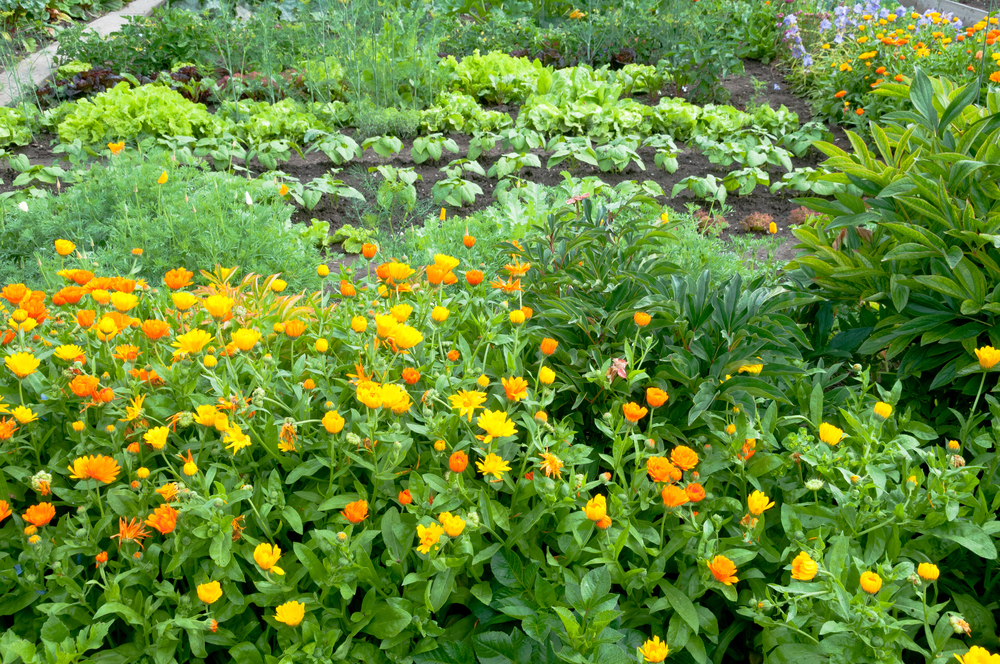
It can also be helpful to think about where plants are placed in relation to one another. Companion planting is an inexact science. But it does seem clear that certain plants are good companions, while others don't do so well when placed close to one another.
By observing your garden, and learning more about companion planting, you can create beneficial groups of plants. You can increase the yield of key plants or crops by creating 'guilds' of plants around them which aid that central plant in a range of different ways.
In forest gardens, perennial polycultures and annual kitchen gardens, carefully choosing harmonious and beneficial plant combinations can help you increase yield in a number of different ways. For example, marigolds grown in the vegetable garden can benefit your edibles in many different ways.
7. Get It Right When it Comes To Plant Spacing
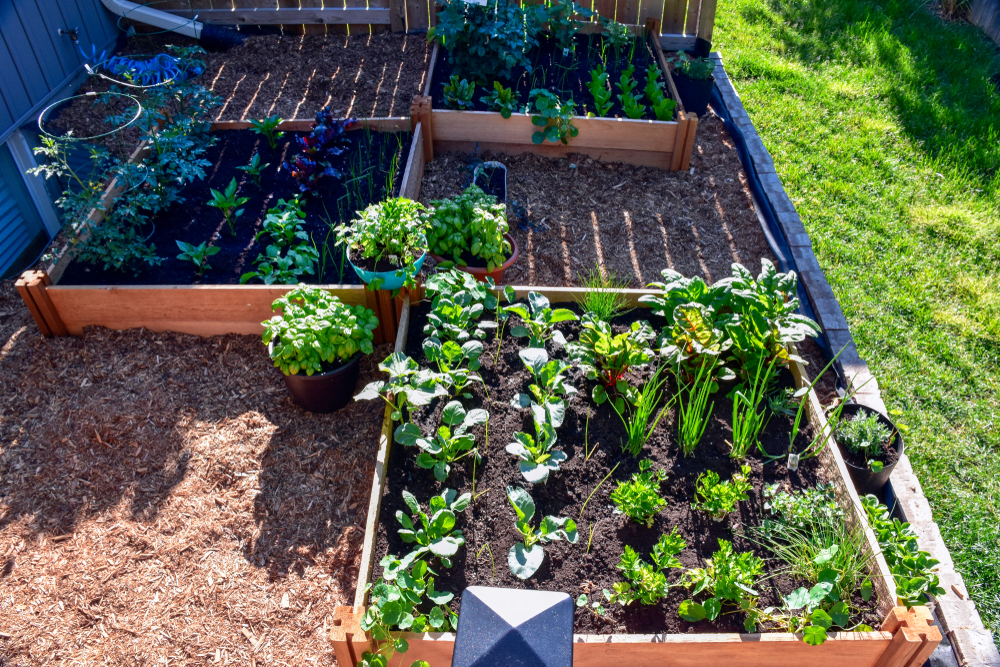
Layered planting schemes and companion planting can definitely help to increase the yield in an edible garden. If you are used to growing in traditional rows, you may find that switching to an intensive square foot gardening technique or into less traditional polyculture planting approach can increase yield.
But whether you grow in rows, in square feet, or take a less orderly approach, plant spacing is still very important.
The right spacing can help to ensure that plants are not competing too much for water or nutrients. It can avoid bare soil which can increase moisture loss, erosion and weed growth. And it can help to reduce the incidence of overcrowding and poor air flow, which can lead to pest and disease problems.
8. Improve Soil Fertility and Protect the Soil To Increase Yield
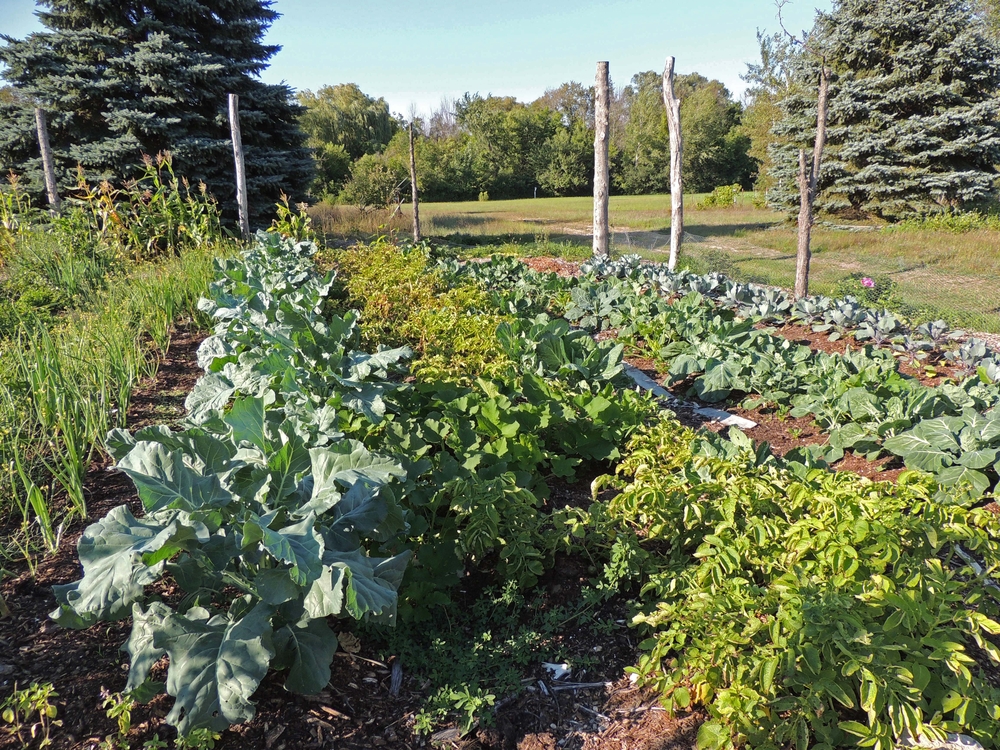
When looking after your garden organically, soil health is one of the most important factors. When looking to increase yield, caring for and enhancing the soil should be a top priority.
The topsoil on our planet takes a long time to form. Poor gardening and farming practices mean that, in many areas, it is being lost or degraded faster than it can be replenished.
Caring for and improving the soil in your garden will boost fertility, and allow your plants to grow well and give a good yield. But not just in this year – for many years to come. We can take care of the soil in our gardens by:
- Implementing a 'no dig' gardening approach. And disturbing the fragile and precious soil ecosystem as little as possible.
- Adding plenty of organic material to the soil as top dressing and mulches, e.g. wood chip and seaweed.
- Avoiding areas of bare soil whenever possible in our gardens.
- Planting specific plants to retain soil on slopes, to improve its drainage ability, fix atmospheric nitrogen etc..
9. Boost Biodiversity Whenever and However You Can
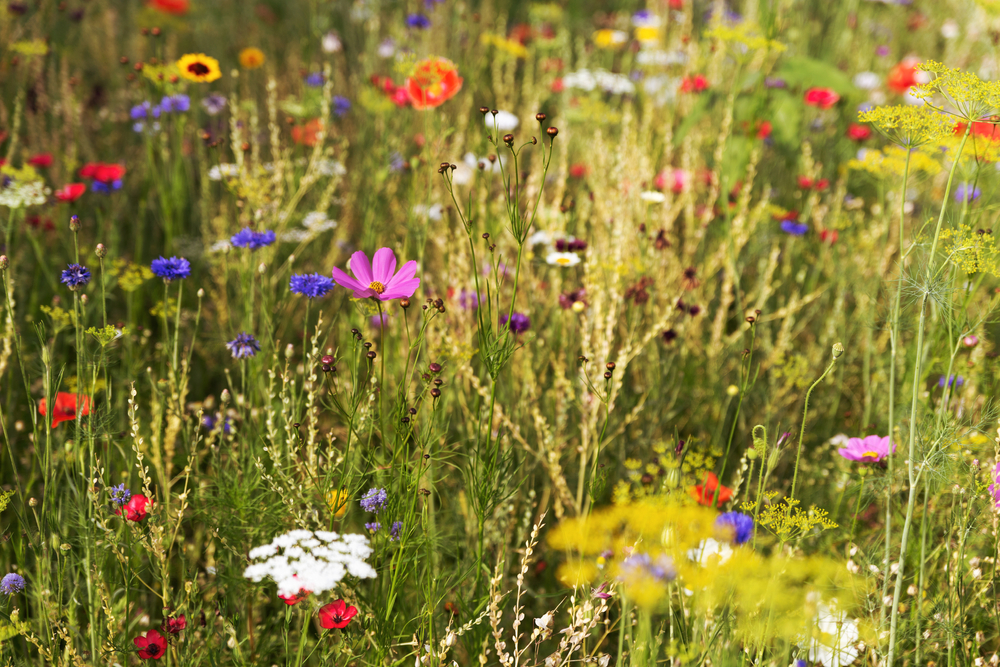
Biodiversity is another crucial factor in the longevity and yield of food producing systems. When it comes to our planting, we should try to choose as wide a range of different plants as possible – perhaps even consider a wildflower meadow or bed on your property. And we should also take a wide range of steps to encourage wildlife onto our properties.
The more diverse a system, the more beneficial interactions it contains. And the more beneficial interactions there are, the more resilient and productive the system can be.
For an edible garden, it is especially important to boost biodiversity in order to:
- Ensure that there are plenty of pollinators around to pollinate your crops.
- Make sure there are plenty of predatory insects and other wildlife to keep the ecosystem in balance and pest numbers down.
- Make sure there is a healthy and productive community of soil life below your growing areas, to help move water and nutrients around.
Boosting biodiversity makes your job as an organic grower much easier. An army of other creatures will be helping you in your gardening endeavors. These varied creatures will each play their role to boost yield from your edible garden.
10. Make Sure You Optimally Meet Water Needs
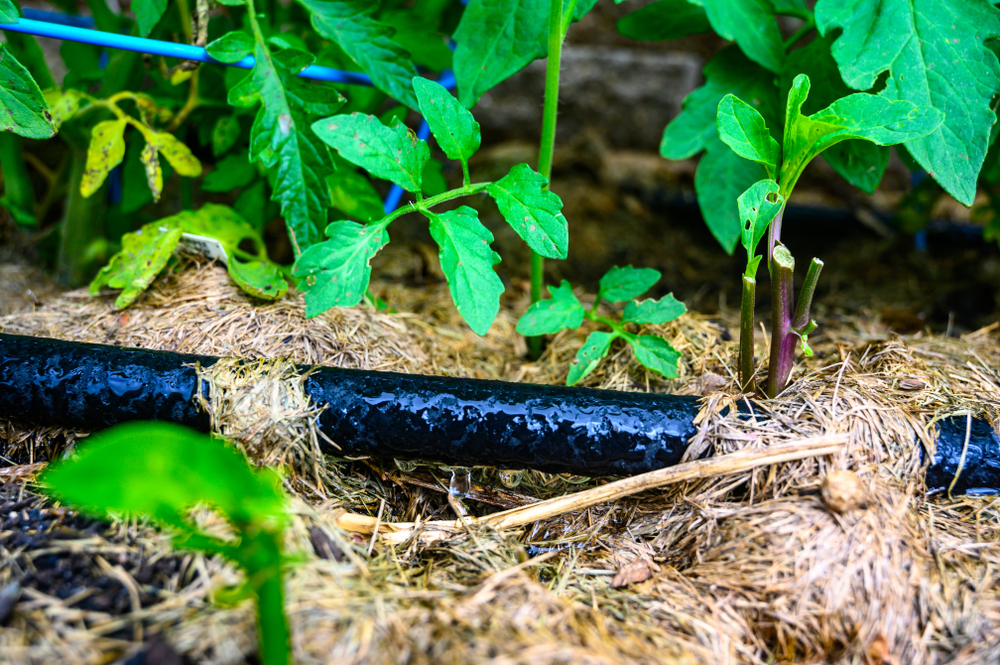
In a low-maintenance garden such as a forest garden, most of the water needs of your plants may be met by natural rainfall once the garden is established. But in most areas, most gardens will require watering during dry spells, especially in the summer months.
Where you are watering through irrigation or watering by hand, it is vitally important to get the water needs right. Over time, as a gardener, you can learn more about the water needs of different plants. Some obviously need a lot more water than others.
Take great care over when you water, how much water you provide, and how often. These things can make a big difference to the health of your plants and the eventual size of your harvest. Water is crucial from seed germination, right through to harvest.
11. Use The Right Mulches Around Your Plants
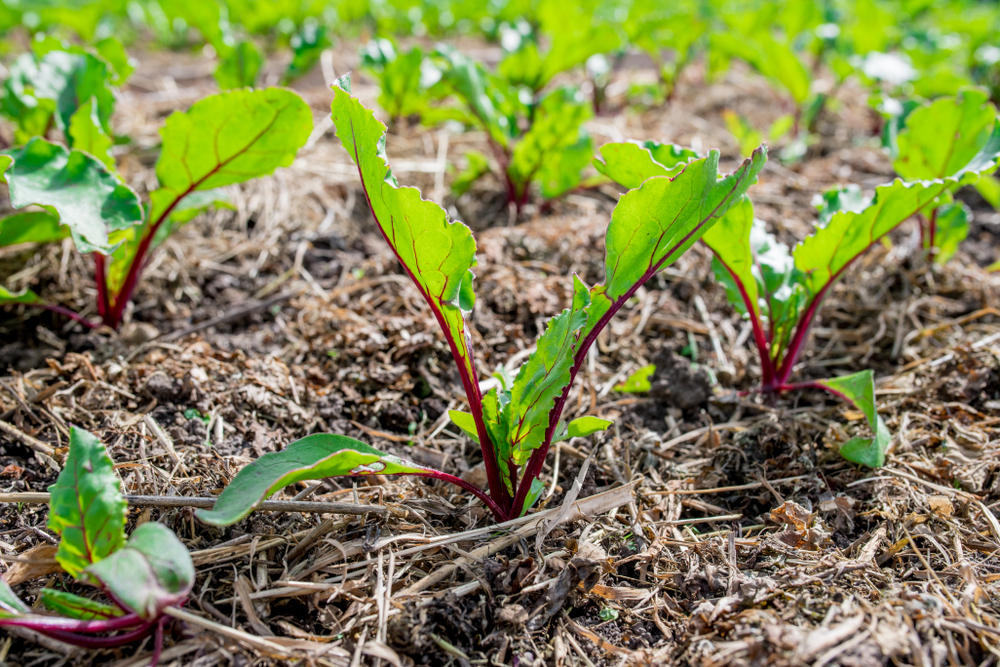
I already mentioned the importance of caring for the soil. And that using mulches is one important way of doing so. But another thing to consider is that you need to match the mulch you use to the plants you are surrounding.
Different mulches will deliver different things. Some are high in nitrogen, some in potassium, some in trace elements required for plant growth. There are a wide range of different plants that can be chopped and dropped to make mulches for your garden. There are also a number of other natural materials that you could use.
It is important not to use the wrong mulches with the wrong plants. For example, it is not a good idea to use a high-nitrogen mulch around flowering or fruiting plants, as high nitrogen levels can encourage leafy growth at the expense of blooms and fruits.
As your experience grows, and your gardening knowledge expands, you should be able to improve your yield by choosing the right mulch to provide the right nutrients for the right plants at the right time.
Obviously, choosing the perfect mulches is not something you can really learn overnight. But by honing your skills and experimenting, over time you should find you can increase yield from your edible garden.
12. Use The Right Organic Liquid Plant Feeds
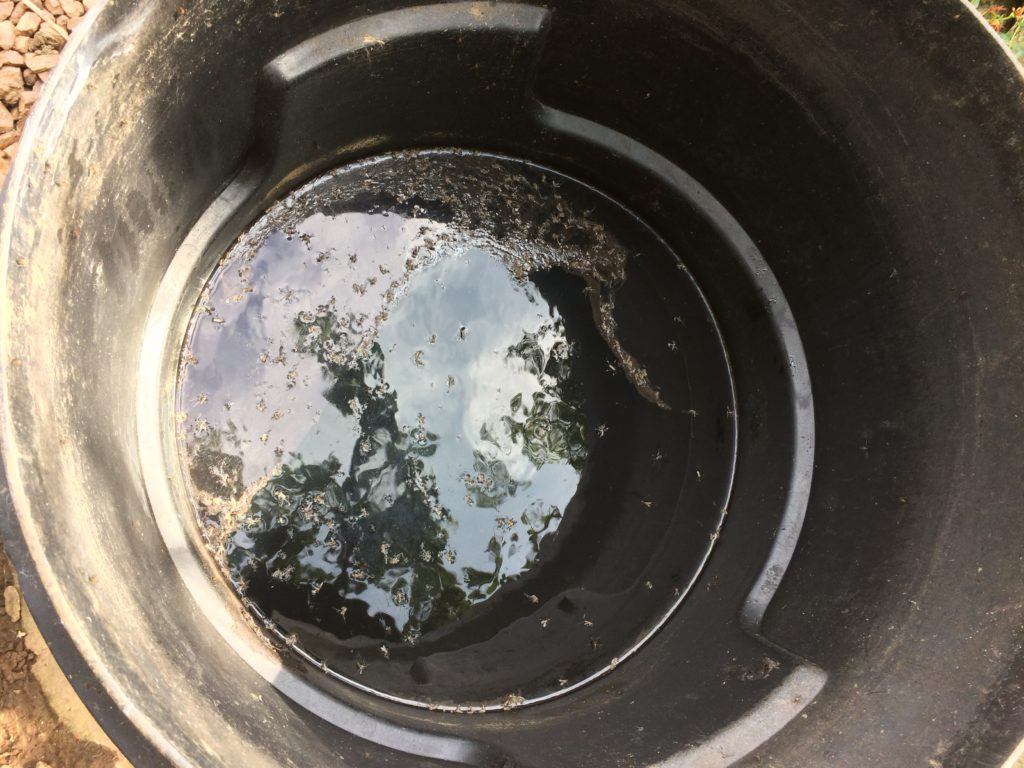
You may already be aware. But if you are not – note that you can make your own liquid fertilizers using weeds and other plants from your garden.
There are a range of different 'recipes' you could try, from comfrey liquid feed, to compost tea, to name but two examples.
But as with mulches, increasing yield means taking care about when, how and where exactly you use these liquid fertilizers.
Be careful, again, not to add too much nitrogen to flowering or fruiting plants, especially when they are coming into those periods of their growth.
13. Prune Perennial Fruit Trees and Other Plants Correctly
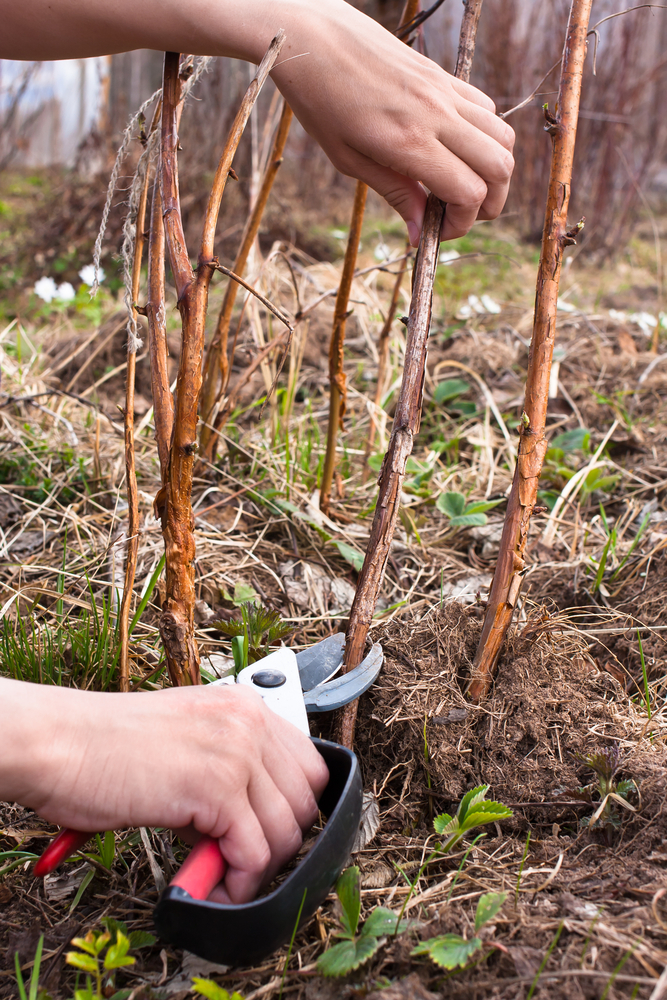
Certain plants have specific requirements that should be correctly carried out at the right times to maximise production of fruits etc..
Just as flowers should be deadheaded to encourage new growth, plenty of edible plants will also do better when you nip off the growing tips at the right time, or harvest top growth regularly. (This latter example is true for many herbs that you might grow in your edible garden.
- The Secret Tomato Pruning Trick For Huge Harvests
- How to Prune Basil for Big, Bushy Basil Plants
One of the most important examples of this, however, is pruning fruit trees, fruiting bushes and fruit canes.
In many cases, you can leave trees and shrubs to their own devices and they will continue to grow just fine. But prune fruiting trees, shrubs and canes correctly and they will provide a higher yield.
- How To Prune Apple and Pear Trees In Winter For Higher Yields
- Prune A Plum Tree For Better Harvests
- How To Prune Raspberries for a Bumper Harvest Year After Year
- Prune Summer Prune Grape Vines For A Bountiful Harvest
More importantly, the right interventions at the right times can also help make sure that they produce more consistently and well over the coming years.
14. Give Nature a Helping Hand With Pollination
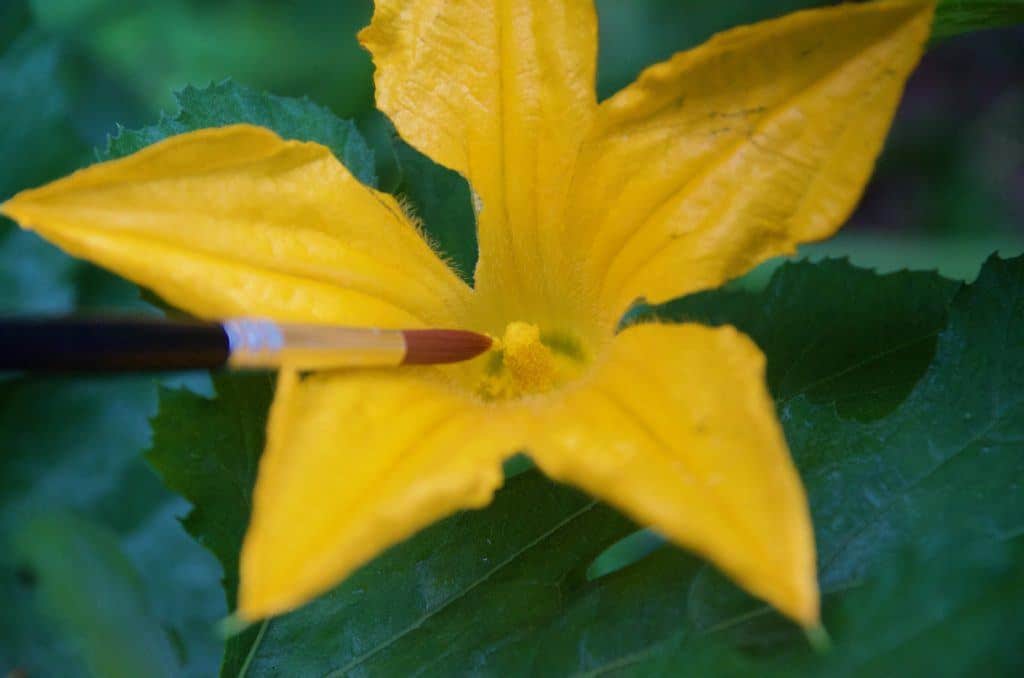
The best way to improve yield by improving fruit set is to make sure you attract pollinators to your area. But sometimes, sadly, pollinators are not there when we need them. This may increasingly be true if the shocking decline in the numbers of many bees and other vital insects continues.
One other thing that you can do is become a pollinator yourself. Crops such as tomatoes and squash, for example, can be pollinated by hand.
- How to Hand Pollinate Squash in 30 Seconds
- How To Hand Pollinate Tomatoes Grown In Greenhouses
15. Be Vigilant for Pests and Disease
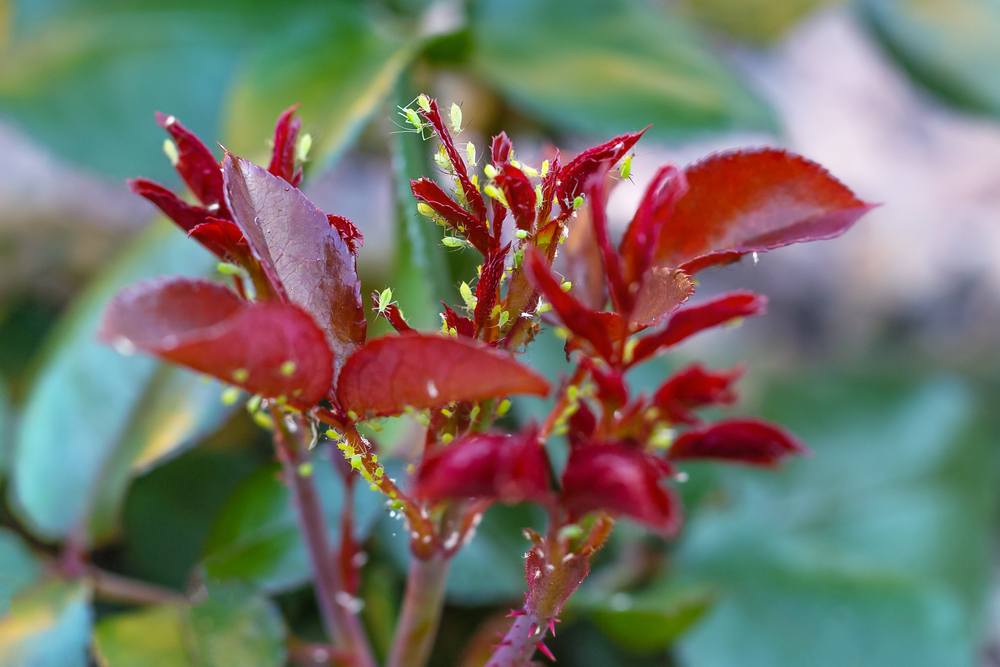
Pests and plant disease are of course something that all gardeners are likely to encounter at some point. These things may not always pose a threat to the lives of your plants. But they can significantly reduce yield, even when the problems are relatively minor.
Of course, making sure you take care of the environmental conditions can help. Boosting biodiversity is also crucial. But one other thing you can do to reduce losses due to pests and disease is simply to remain vigilant.
The more often you check over your edible garden, the more likely you will be able stay on top of any problems. And get to grips with them before those problems get out of control. Pick off pests where you can, and remove any diseased plant materials carefully as soon as possible.
16. Extend the Growing Season in Your Edible Garden
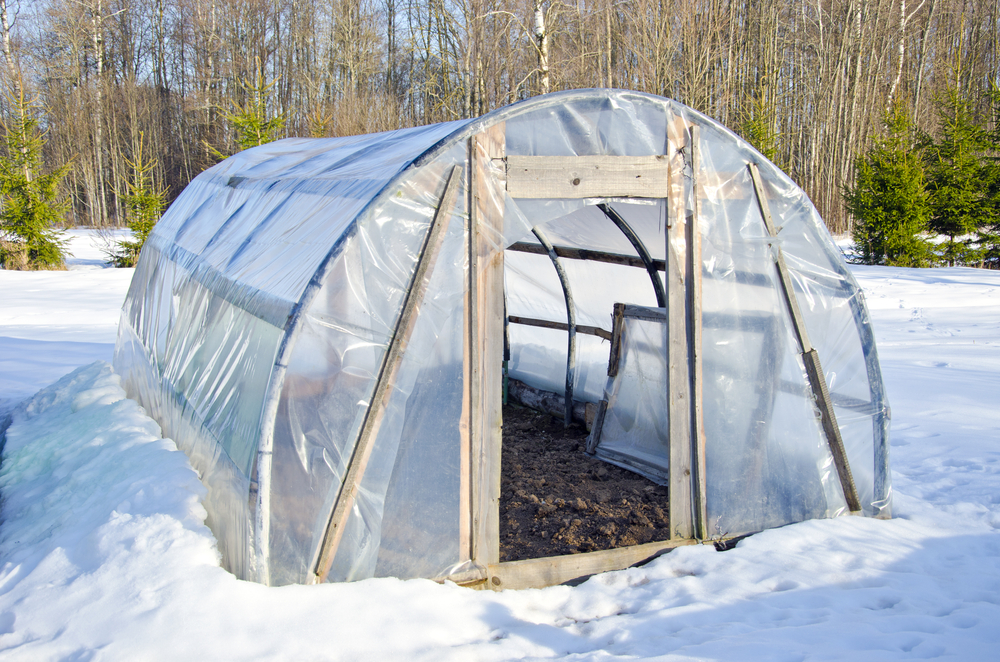
You may think primarily about improving yield in a given physical area. But is is also important to think about theamount of time over which you can obtain a yield. Obviously, if you can extend your growing season, your yearly yield will be increased.
There are a number of measures short-season gardeners can take to extend the growing season. You can sow seeds indoors long before you can sow them outdoors. So think about germinating seeds on your windowsills indoors early in the year.
You can also begin sowing earlier outdoors when you have structures such as greenhouses, hoophouses or polytunnels, cloches, cold frames, hot beds etc.. Such undercover growing areas can help you warm soil for planting earlier in spring, allow plants to remain in the garden for longer in fall.
They can even, in certain circumstances, make it easier for you to grow food all year round. You may even be able to continue growing a range of produce even during the coldest winter months.
17. Make a Good Plan For Year Round Growing
No matter where you live, there are ways to grow food all year round. Restricting yourself only to summer growing can reduce potential yield. So to boost yield, it is a good idea to make a good plan for year round growing. (And to make a longer term plan so you have a better idea of how your garden will evolve over time.)
Crop rotation is key to reducing pests and disease, and maintaining fertile soil. Organisation in terms of crop rotation and what to plant when throughout each year can help you maximise the amount of food which your garden can provide.
Make a planting calendar and make a note of what you have sown when. And determine when you expect to harvest each crop. You should also make sure you are filling gaps as soon as they appear to make the most of your growing areas.
18. Companion Plant Slow Growing Crops With Faster Growing Edible Plants
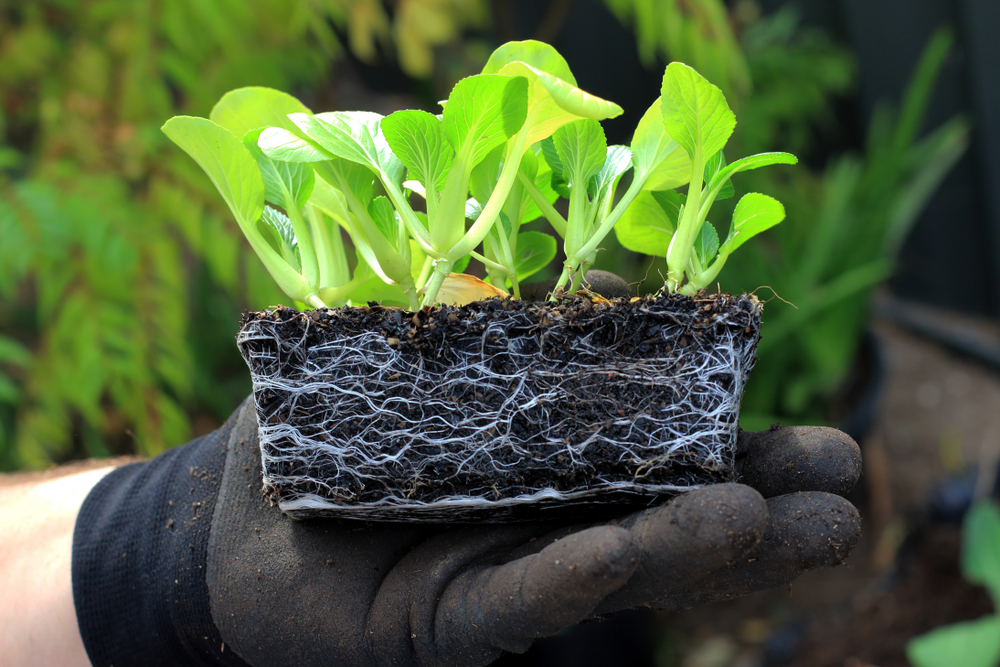
Speaking of filling gaps, research has shown that intercropping of certain plants can often be used to increase overall yield. Think about time as well as space. Cabbages, for example, will grow more slowly than other plants.
The gaps between them when they are small can be filled with lettuce or other fast-growing crops. These fast-growing crops will be harvested before the cabbages grow to need the space and nutrients. So you can get an additional yield from the same garden space.
19. Plant Successionally For Longer Harvesting Periods

In your fruit and vegetable gardens, another thing to think about is how you can extend the period over which you will be able to harvest each crop. To increase yield you should be:
- Planting different species of fruit tree which can be harvested at different times. (For example, consider planting early, mid-season and late varieties of apple tree.)
- Establish a garden with plenty of soft fruit canes, fruiting bushes and other perennial plants to harvest from early summer right through to fall.
- Sow annual vegetables successionally. Have several planting sessions through spring/ early summer for a staggered harvest and higher overall yield.
- Sow cut-and-come-again leafy crops and herbs that can be harvested little and often over a long harvesting period.
20. Don't Forget to Make the Most of Secondary Harvests
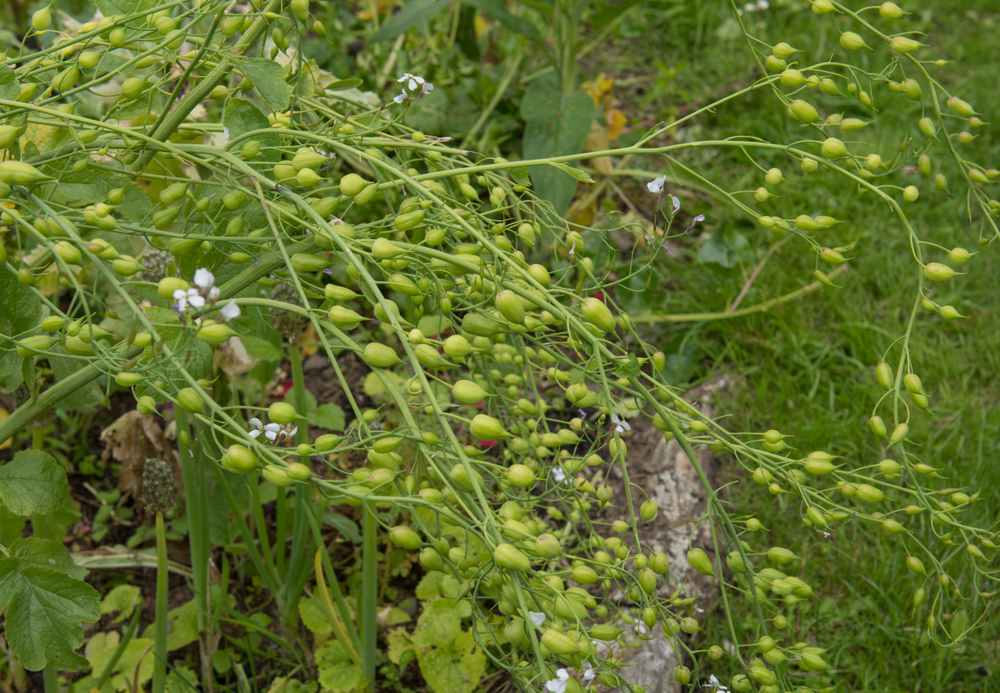
When calculating your yield, don't forget all the secondary harvests that your garden might provide.
First of all, remember that food is not the only thing that you can get from an edible garden. For example, it should also provide weeds for liquid feeds and vegetative matter for composting etc.. Some gardens could also provide herbal medicine, dyes, and perhaps even natural materials for crafting and fuel.
It is also important to make the most of secondary edible yields. For example, don't throw away the leaves from turnips and beets. These are useful leafy greens. Allow one or two radishes to go to seed and you can have an abundant secondary yield of radish seed pods.
21. Collect Your Own Seeds To Grow Next Year
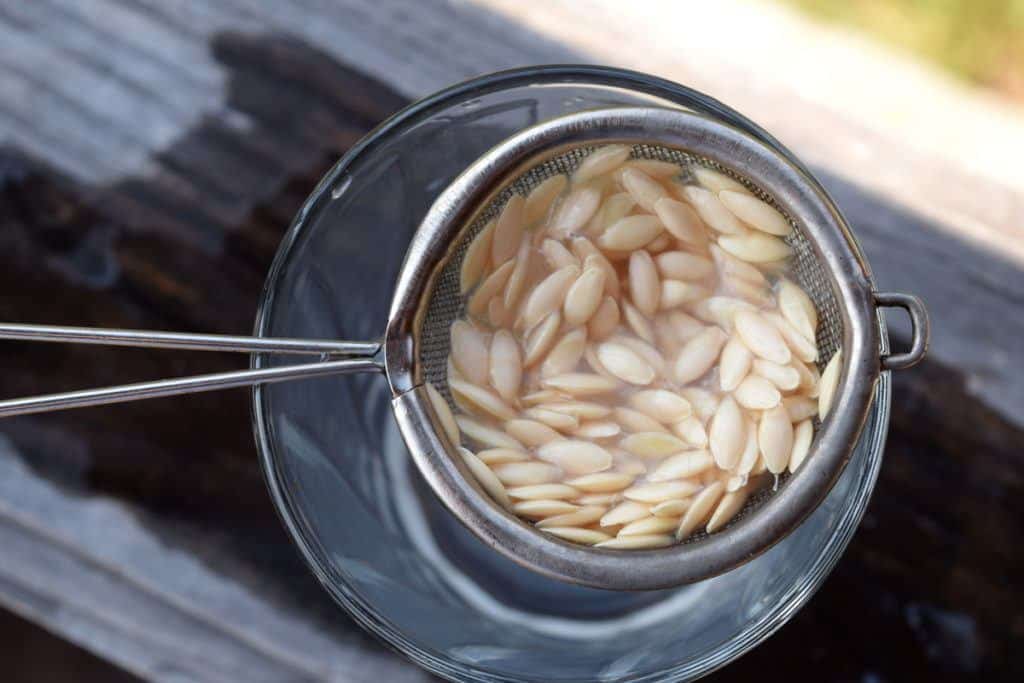
Finally, in order to increase yield, it is definitely worthwhile letting some of your plants go to seed.
Collect your own seeds and you could see an increase in yield year-on-year, as you breed plants that are better and better suited to your particular garden. (Remember to choose heritage or heirloom crops, so the seeds will come true. And take cross-pollination into account when selecting plants to breed from.)
- How To Save Tomato Seeds
- How To Save Cucumber Seeds
- How To Save Pumpkin Seeds
These are some of the key ways to increase yield from your edible garden. Remember to think holistically and take care of all the basic elements of your garden. If you do, you are far more likely to be able to successfully grow a good quantity of food.
But also, remember to keep up your enthusiasm. Gardening may not always be easy – but it certainly is rewarding. And it is always a very worthwhile thing to do.
Elizabeth Waddington is a writer, permaculture designer and green living consultant. She is a practical, hands-on gardener, with a background in philosophy: (an MA in English-Philosophy from St Andrews University). She has long had an interest in ecology, gardening and sustainability and is fascinated by how thought can generate action, and ideas can generate positive change.
In 2014, she and her husband moved to their forever home in the country. She graduated from allotment gardening to organically managing 1/3 of an acre of land, including a mature fruit orchard,which she has turned into a productive forest garden. The yield from the garden is increasing year on year – rapidly approaching an annual weight in produce of almost 1 ton.
She has filled the rest of the garden with a polytunnel, a vegetable patch, a herb garden, a wildlife pond, woodland areas and more. Since moving to the property she has also rescued many chickens from factory farms, keeping them for their eggs, and moved much closer to self-sufficiency. She has made many strides in attracting local wildlife and increasing biodiversity on the site.
When she is not gardening, Elizabeth spends a lot of time working remotely on permaculture garden projects around the world. Amongst other things, she has designed private gardens in regions as diverse as Canada, Minnesota, Texas, the Arizona/California desert, and the Dominican Republic, commercial aquaponics schemes, food forests and community gardens in a wide range of global locations.
In addition to designing gardens, Elizabeth also works in a consultancy capacity, offering ongoing support and training for gardeners and growers around the globe. She has created booklets and aided in the design of Food Kits to help gardeners to cool and warm climates to grow their own food, for example. She is undertaking ongoing work for NGO Somalia Dryland Solutions and a number of other non governmental organisations, and works as an environmental consultant for several sustainable companies.
Visit her website here and follow along on her Facebook page here.
How To Get A Better Yield From Your Veggie Garden
Source: https://www.ruralsprout.com/increase-edible-yield/
Posted by: campbellhadeare.blogspot.com

0 Response to "How To Get A Better Yield From Your Veggie Garden"
Post a Comment